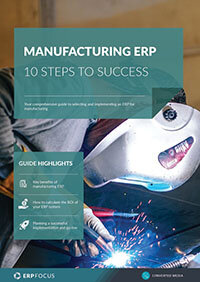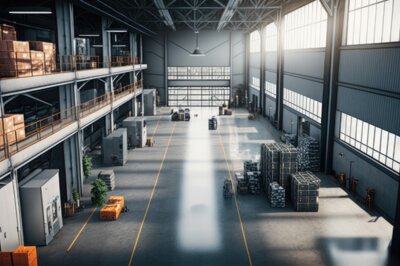ERP & Machine-to-Machine Communication
Machine-to-machine communication is a new and evolving technology. Even if you have never heard the term, you probably have some experience with it. Sensors along highways monitor traffic volume and weather conditions and other factors. The data is analyzed and traffic lights timing can be automatically adjusted to suit the conditions of the moment.
Sensors can be in place to monitor conditions within our businesses too. Data from one or many sensors passes wirelessly to a computer system where it is analyzed and a reaction can be sent back into the factory system automatically in real time. Our ERP can be part of the analysis engine and might be the medium used to return the reaction.
The sensor might be at the customer site feeding our order entry process and creating demand in our ERP. Imagine we supply lubricant to our customers. Our sensor at their machinery reads the usage in real time and orders another barrel to be delivered just before they run out. This can work even in a low-tech business. We supply wooden reels to a cable manufacturer. We have a webcam looking at the rack where we deliver empty reels and they are stored. When there is the right amount of empty space on the rack, we open a job to cut more plywood and build another truck load of reels. Simplistic, but practical.
Opportunities for Automation
Maybe we are a repair service business who have implemented machine-to-machine communication processes. We fix office copiers. Think of the customer satisfaction if the copier detected a fault and opened its own trouble ticket. The order automatically is sent to the repair technician’s mobile ERP application with an estimate of the time required and a list of parts that might be required. He is on the way before the office admin even knows the copier is going to fail. Then, as the technician leaves, his smart phone signals the bank to process a debit on the customer’s bank. No one took the order. No one sent a bill. No one took the check to the bank. We did business with only a direct labor person.
Inside our small machine shop we have a mix of lathes and mills and several downstream manual operations to assemble a product. The mill already has sensors reading the rate the metal is being shaped and sending the data to our ERP system. The ERP scheduling for manual operations can be updated automatically as the mill works the metal. The manual operation might be a person inserting spacers and fasteners to attach components to the milled piece. Sensors can track the weight of spacers in the tray and reorder more from the stockroom. Another sensor sees the product move past a point on the workbench and schedules following operations. As the last operation is starting, a sensor creates the FedEx ticket in advance and calls for a pickup.
Put your imagination to work. There are opportunities in any business to automate and speed up your work flows through machine-to-machine communications.
Free white paper

Manufacturing ERP: 10 steps to success
Complete step-by-step guide to manufacturing ERP software

Related articles
-

3 New Year's Resolutions for Your Discrete Manufacturing ERP Project
Getting the best from your manufacturing ERP for the new year.
-

CMMC Compliance: What Aerospace and Defense Manufacturers Need to Know
Key insights on CMMC compliance, deadlines, and securing DoD contracts with CMMC 2.0 certificatio...
-

How to use ERP workflow to improve supply chain management
Learn how automated ERP workflows can improve order management, production scheduling and more su...

